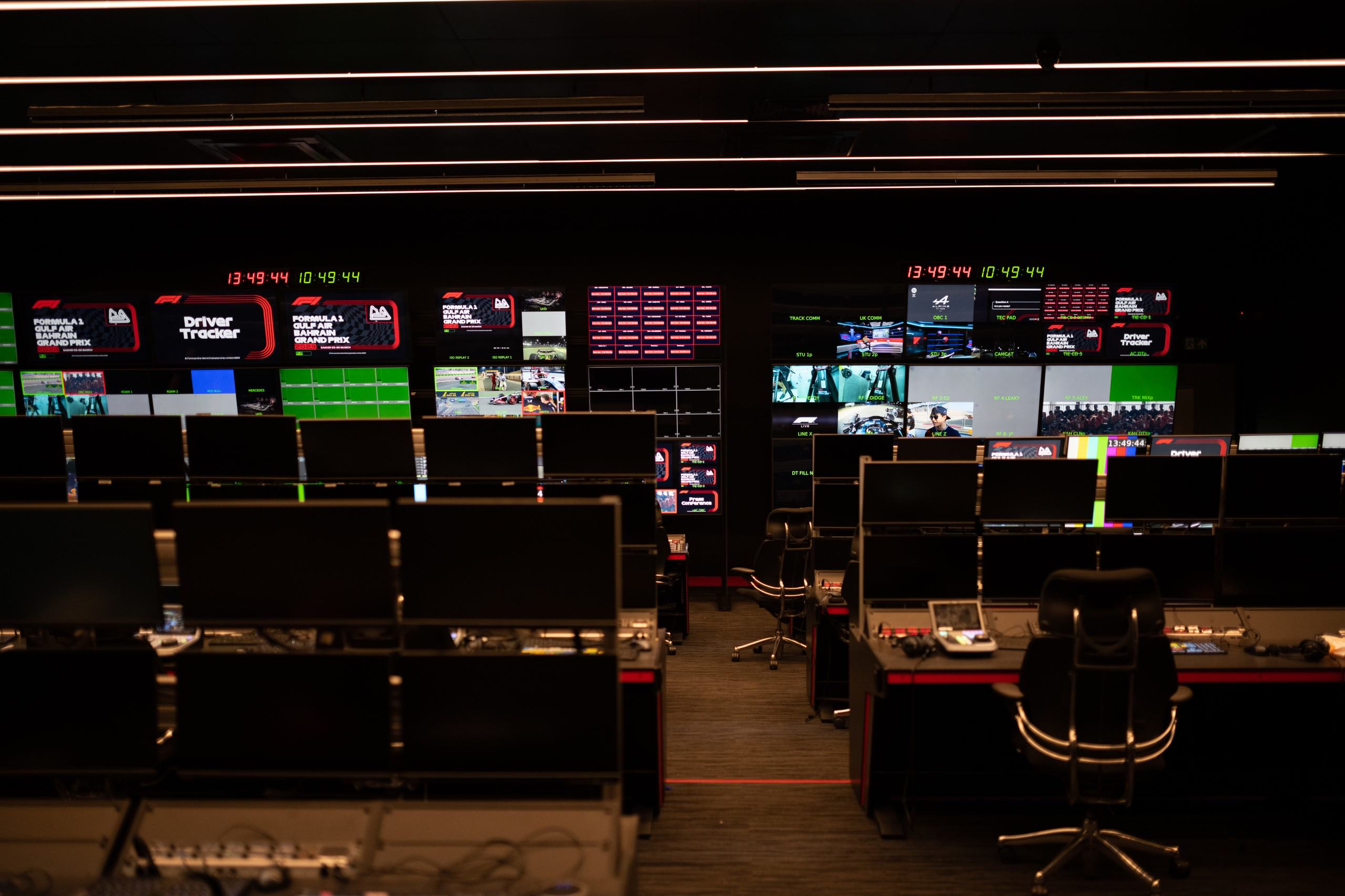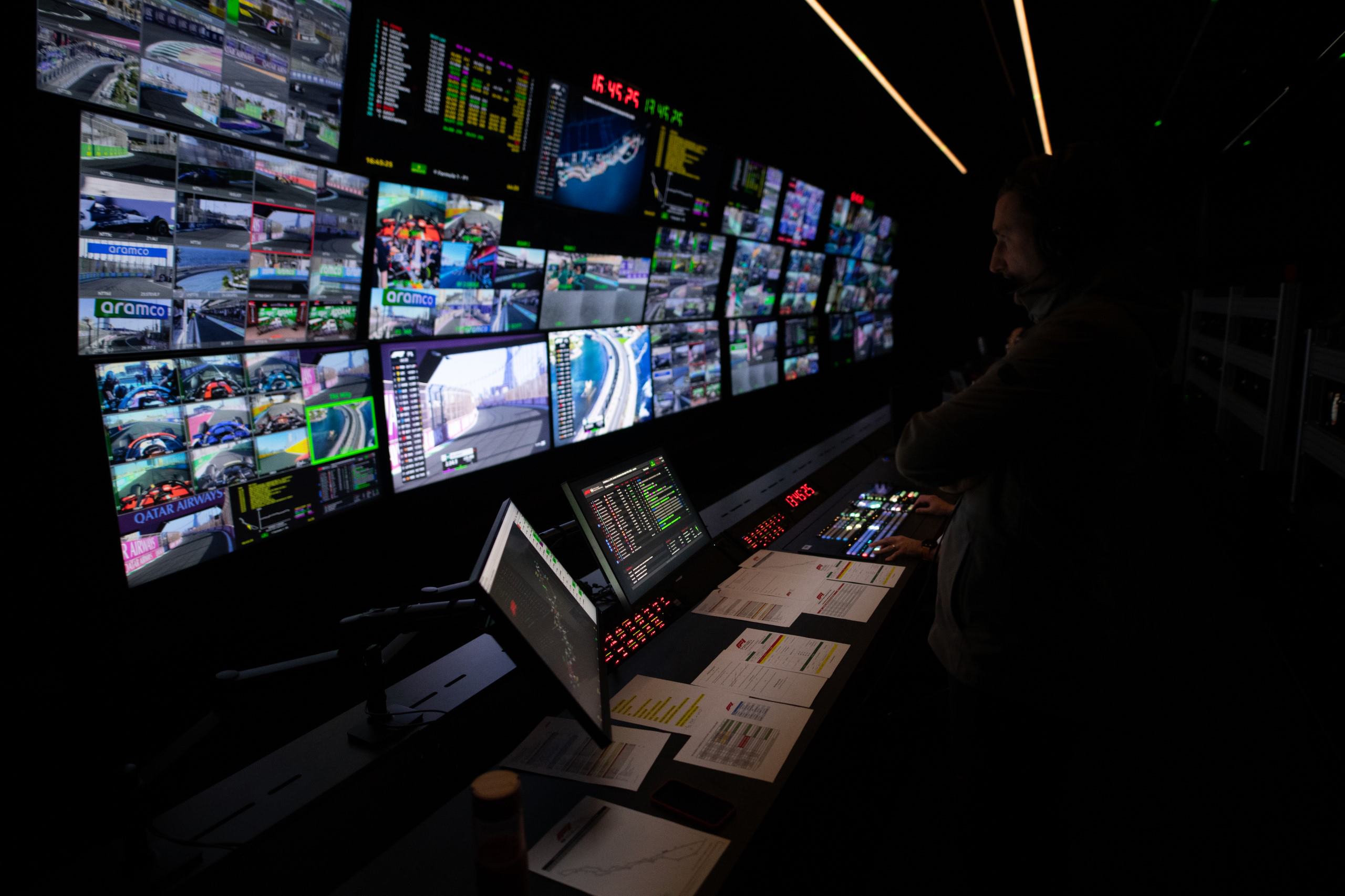An operation that rivals NASA: How F1 is broadcast to the entire world

When you watch a Formula 1 race, it is often easy to ignore the process, equipment and manpower that has gone into broadcasting to the world.
Unlike other sports such as football, cricket or tennis where the action is constricted to a small patch of grass all visible from a single viewing point, F1 is a different prospect.
22 different circuits in 20 countries across five continents and with 20 different cars going round the several miles long track at the same time.
The people charged with making sense of the madness primarily work in F1’s Media and Technology Centre or the M&TC in Biggin Hill, just south of London.
“We have around 400 people here, most of them are employees, some of them are contractors,” said M&TC director Roberto Dalla, a man whose F1 experience dates back two decades.
“We have people from 29 nationalities working with us in the Media and Technology Centre. Around 50% are engineers, 117, and there are 50 editors and 48 producers. We have 68 people who take care of all our operations all around the world.”
To broadcast an F1 race is an enormous endeavour. It takes 300 people with 170 on track and 130 back at base. At each circuit, F1 will deploy 36 miles of fibre cabling, 38 antennas, 750 pieces of equipment, 12 nodes, 28 ultra HD cameras and 147 microphones and while F1 has an on-site location known as the Event Technical Centre, the beating heart is the M&TC.
底部有一些of a facelift of late with the former aircraft hangar transformed into a hospitality area that has images of Max Verstappen and Charles Leclerc’s finest moments on the wall, as well as a show car dressed in F1’s Net Zero colours.
But the most striking element of this room is the window into what is next door. You could be forgiven that you were peering into Mission Control at NASA’s Houston Space Centre but the objective of this room is not to land a man on the Moon, but instead bring F1 to the masses.
The first room you encounter as you walk through the sliding door is split into two chunks. On one side is the international feed team which provides images to TV networks across the world then on the right side is F1 TV.
In front of each desk is enough screens to become the perfect gaming set-up as well as a desk full of buttons, but it is not as confusing as you might think.
“The best way of looking at it is it’s sort of a live editing machine,” one of the producers explains. “It’s a lot more simple than it looks.
“Effectively what you got is all different sources, camera feeds, VT and all you need to do is cut between them.”





In front of them is a wall of screens with each labelled as to what it is showing. During a race weekend they will be able to see every camera shot from each operator at the track and can line up that ready to be broadcast to the viewers.
While this room is impressive enough on its own, it is merely a small part of putting a broadcast on. Next door is the team that is concerned with the gathering of data and the telemetry. Within each Formula 1 car is a box that sends all the data from the car to nodes around the track which is then beamed back to M&TC, meaning the screens in this room look something similar to any Bond villain’s lair.
It is not just for entertainment purposes either. Rather than each team having their own way of getting data, it is done here and then forwarded on to the relevant team. While F1 does take some data for broadcast, as seen on the graphics, the majority of it is encrypted meaning it is safe from any prying eyes.
A few days out from the start of the British Grand Prix, the team in here are busy working on data ready from last year’s Silverstone event to give them an idea of what they can expect come the weekend.
Next door is a room that Bernie Ecclestone was a big fan of and that is the AI machine able to produce digital advertising boards on the track. These are things you will have never noticed while you were watching on your TV but if you have ever been to the track, you may spot that there is less advertising than on a broadcast.
This is where these computers come in. They are able to digitally print adverts onto the track in places where they would otherwise be impossible to do physically. What’s more, these adverts can be changed country to country and that opens the door to plenty of companies buying the same piece of real estate – the reason Ecclestone was such a fan.
But the most interesting room by far is actually the smallest. Inside are six or so desks and the people that sit at them are concerned with team radios.
这些声音剪辑简直是突飞猛进recent years but the process still requires some brilliant minds. Not to mention the person who listens to all 20 drivers speaking at once and it is their job to pick out anything interesting.
Another recent change is the subtitling of radio clips which has made the team able to broadcast some clips that may have been deemed of too poor quality without it. All of that is done by one man who can type at 130 words a minute meaning that soon after it has come out of the driver’s mouth, it will be typed and ready for broadcast.
And it is speed they are most concerned with. The team aims to get a message broadcast within five seconds of receiving it and crucially, have a rule that they rarely broadcast a message that is more than a lap old as they do not want to create a false narrative.
最后一些方便的工具包是审查马基ne that picks out swear words meaning tactics such as one former Ferrari engineer who used to drop the F-word every other word when reading out data no longer has that option.
The M&TC is not just a site for external broadcasts either for they have their in-house studio situated at the back. As we took a tour, Jolyon Palmer and Bernie Collins were preparing for the former’s analysis show after the Austria weekend and this looks just like any TV studio we have seen before.
Multiple cameras for different angles including one focused on a large touch screen for analysis while a green screen area is also being built to further enhance their shows.
After you are done being wowed by the live broadcast team, it is time to head to the many other departments situated in this former hanger. The F1 app and the huge office space is dotted about but one of the most interesting departments is where they actually make the equipment.
Laid out on a table is almost a hall of fame of pieces of equipment that have led an interesting life. Chief among these is the camera that was attached to the top of Zhou Guanyu’s car during his crash at the 2022 British Grand Prix so while the Halo may have saved his life, the camera also did plenty of the heavy lifting and is remarkably still in one piece.




The same cannot be said of the one that was attached to Sergio Perez’s car during his barrel roll at the 2015 Hungarian Grand Prix which has been destroyed to such an extent that the motherboard underneath is on display.
The final piece of impressive equipment in this room is one that looks just like a shotgun shell but if you were to shoot it with a shotgun, it may well survive. This is one of the microphones that is placed into the car and to create a better audio quality, F1 wanted to place it inside the exhaust.
The problem with that is if you were to use the traditional protection from wind and external sound, it would set on fire in a matter of seconds so what was the team’s solution? Kevlar.
The same material that is used to stop bullets was taken and stripped down until it was able to fit inside a microphone, an invention that particularly impressed a German audio specialist when he came for a visit.
As you finish the tour and arrive back at the hospitality section, you are struck by just how big an operation it is to get F1 from a track and onto our TV screens. Hundreds of members of staff and triple that in equipment. Screens everywhere and desks full of buttons with each team collaborating with each other and then the wider group.
It is an effort that could rival the endeavours of NASA but at least these cameras are easier to get back.


